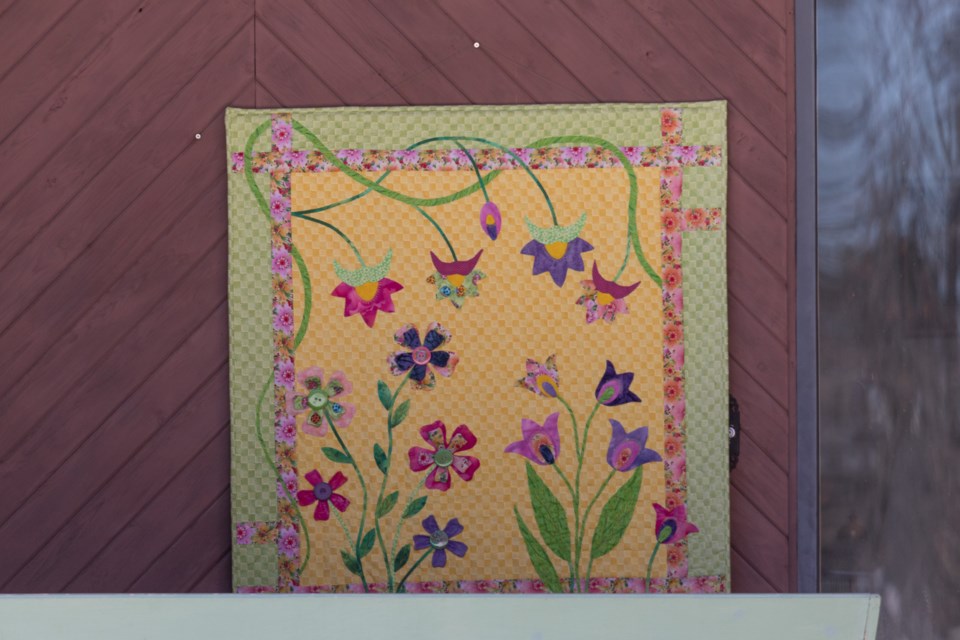SAULT ST. MARIE, Ont. – Sault Ste. Marie World Quilting Day – also known as World-Wide Quilting Day or National Quilting Day – is held on the third Saturday of March each year. This celebration of quilting demonstrates how the art binds quilters together.
On Saturday, quilt shops – most of which have been closed by this time – and the quilters who support them banded together to celebrate with special events. Many shops took to online delivery of workshops and seminars.
In Sault Ste. Marie members of Stitches from the Heart Quilt Guild marked the day by hanging quilts outside their homes.
Spokesperson Donna St. Jules explained via email that a Facebook post about hanging quilts outside for National Quilt Day was forwarded to guild members which prompted the movement. It was a way for the members to connect with each other and the broader community.
"We hoped that it would bring a smile to someone in light of the uncertainty right now."
"The information was shared on our Facebook page and forwarded to members so they could participate if they chose and if the weather cooperated," said St. Jules.
On a personal note, St. Jules said, "During this difficult time of uncertainty and forced social isolation, it is really important for me to feel as though I am doing something to help others and give back to my community. I find comfort making quilts especially when they are for people who are sick as part of the Guild's Comfort Quilts program. It has helped me to feel connected to others."
Normally, quilting would be considered an indoor activity. Changes along with innovative quilters of this era have found exciting ways to remove the barriers. They have found ways to take quilting to the next level.
For much of history, quilting was mainly considered utilitarian – layers of fabric were stitched together for physical protection and insulation. Some of those that contained decorative elements have now been preserved as art pieces.
In the past, the type of quilt produced was directly influenced by many factors, such as economic status, geographical location, supply availability, tools, events or causes, and even religious or ethnic backgrounds.
The invention of the sewing machine in the mid 1800s opened many doors for faster quilt making and greater volume. Some quilts were pieced by machine and hand quilted and some were done totally by machine.
New sewing machines of today have changed it even further. There are special machines for embroidery, piecing, and even quilting. It is not unusual for most experienced quilters to have one of each.
Today, quilting and its related techniques are huge revenue generators. There are whole vacation experiences planned around it. Some examples of these might include a cruise where technique workshops are taught while soaking up the scenery, a whole city that hosts a show throughout, quilters travel many miles to attend workshops hosted by a shop, and quilters who connect with every quilt shop along a journey.
Quilters are now both men and women. Large guilds of quilters have been formed around the world for those who wish to learn and preserve the art.
They treasure the feel of the fabric, the colour or pattern, the tools and even the new friendships. They carry their projects with them while camping, riding, meeting, waiting or even just relaxing. At home, many of them have large studios or spaces set up specifically for their craft.
While self-isolating on World Quilting Day, I made my way around town in my car to photograph some of the quilts on display. They did not disappoint.



